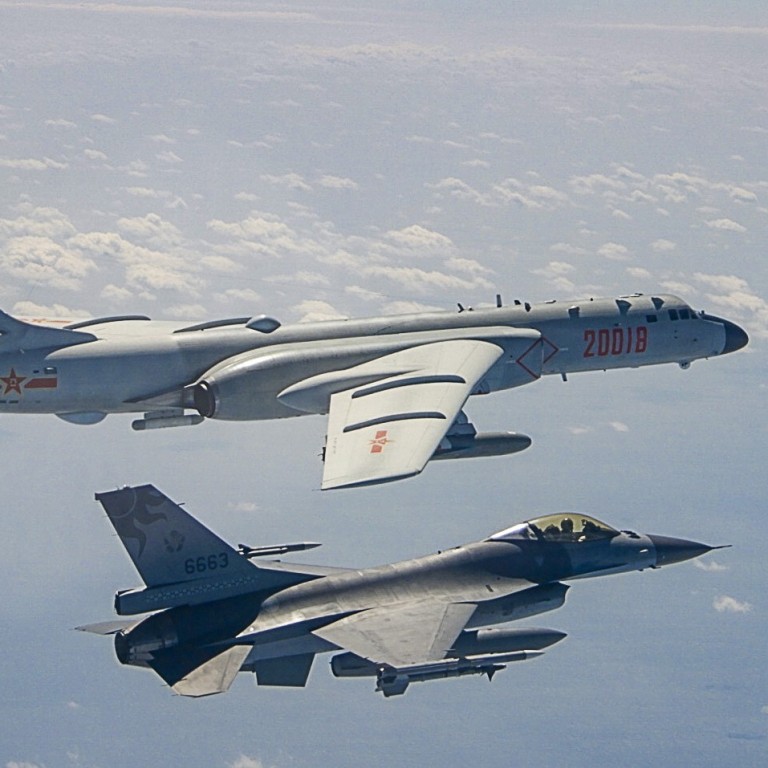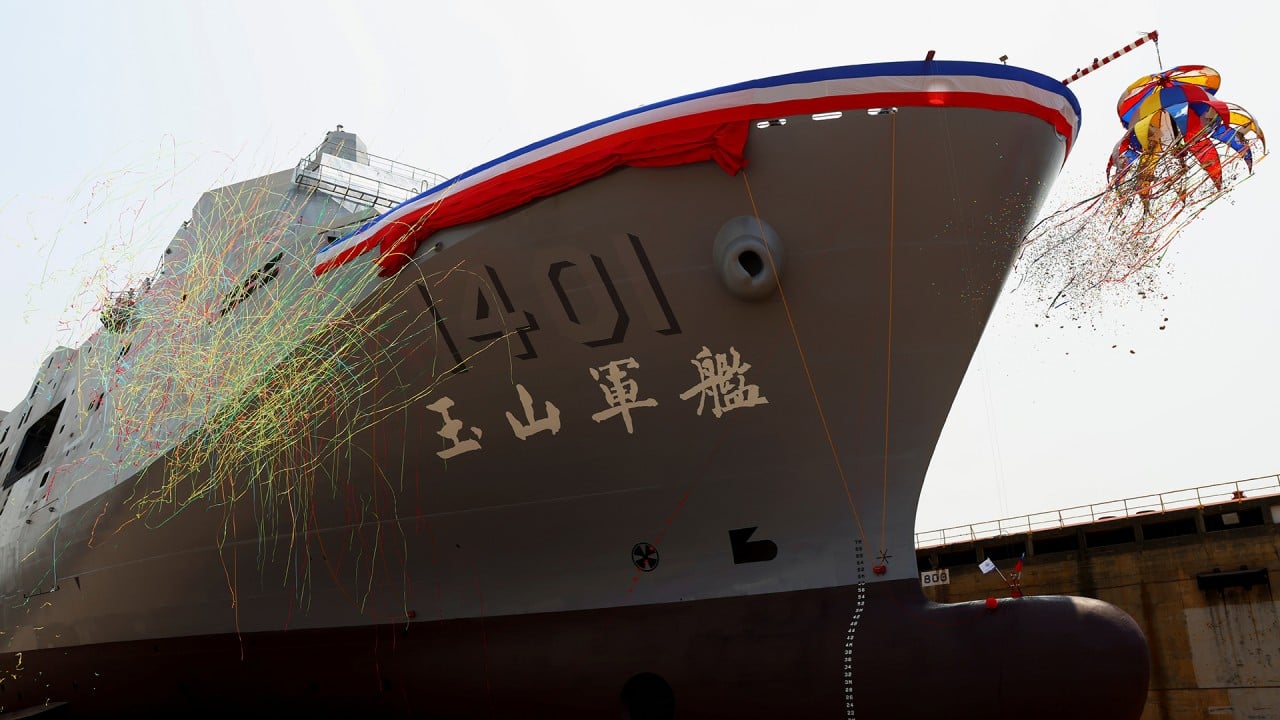
Why does mainland China keep sending planes into Taiwan’s air defence zone?
- The flights help train pilots and keep up the pressure on the island, but observers say they also help gather intelligence on the US and other countries
- Beijing has never renounced the use of force to bring Taiwan back into the fold and the large-scale sorties help the PLA prepare for a possible invasion
As well as helping to train its pilots and intimidate Taiwan while wearing down its air force, the flights are also meant to gather intelligence on the US and other countries operating between the Bashi Channel and South China Sea and familiarise the People’s Liberation Army with the area.
Data released by Taiwan’s defence ministry shows that since the beginning of last year, more than 650 PLA warplanes have entered Taiwan’s southwest air defence identification zone on their way to the Bashi Channel – the gateway to the western Pacific and the disputed South China Sea.
Taiwan vows to defend itself after Suga qualifies Japan’s stance
Responding to each incursion is costly and tires out Taiwan’s much smaller air force, which has to scramble twice or even four times as many planes to warn off their PLA counterparts.
Last year, the air force spent close to NT$30 billion (US$1 billion) and an extra 20 per cent of flight time on such actions, and last month the Taiwanese military said it would stop sending fighters to track every incursion and would use slower planes and ground-based radar to track some of the sorties.
Observers said the air and sea southwest of Taiwan, where the US has also increased its military activities, had become a key route for PLA planes and ships in recent years.
“The PLA has its own military plans for this area, not only training its air force to prepare for a possible invasion of Taiwan, but also to test the combat readiness of its pilots and its warplanes,” said Chieh Chung, a professor of international relations and strategic studies at Tamkang University in Taipei.
He said the use of large flights with different types of planes suggested that the PLA also wanted to test the effectiveness and combat performance of its air brigades.
The large-scale April 12 incursion included 14 J-16 fighter jets, four J-10 fighters and four H-6 bombers, as well as two Y-8 anti-submarine planes and an airborne early warning and control aircraft, according to Taiwan’s defence ministry.
Chieh said some of the planes had been dispatched from different military regions on the mainland, including inland areas, allowing pilots to familiarise themselves with the flight routes and potential combat zones and make it easier to link up with other planes in the event of war.
“What the PLA most wants is to strengthen its command and control in the Bashi Channel as evident by its staging war games in the vicinity and sending reconnaissance planes and submarine-hunting planes to the area for intelligence gathering, which includes submarine activities, ocean topography and hydrological features in the region,” Chieh said.
Chieh said the PLA’s actions in the Bashi Channel – which is deep enough to cover up submarine activities – were mostly aimed at the US.
US spy planes keep close eye on China amid live-fire military exercises
Although Washington switched diplomatic recognition to Beijing in 1979, it has continued to maintain close ties with Taiwan and is committed to supplying arms to help the island defend itself.
According to a March 20 opinion poll by the Taiwan International Strategic Study Society, 63.3 per cent of the respondents did not believe the PLA would attack the island in six years and only 29.1 per cent believed it would.
“Taiwanese people are self-contradictory. On the one hand, they support [Taiwanese] President Tsai Ing-wen’s anti-China policy, but on the other hand, they believe the mainland will not resort to force to bring Taiwan back,” said Wang Kung-yi, head of the society, a Taipei-based think tank.


